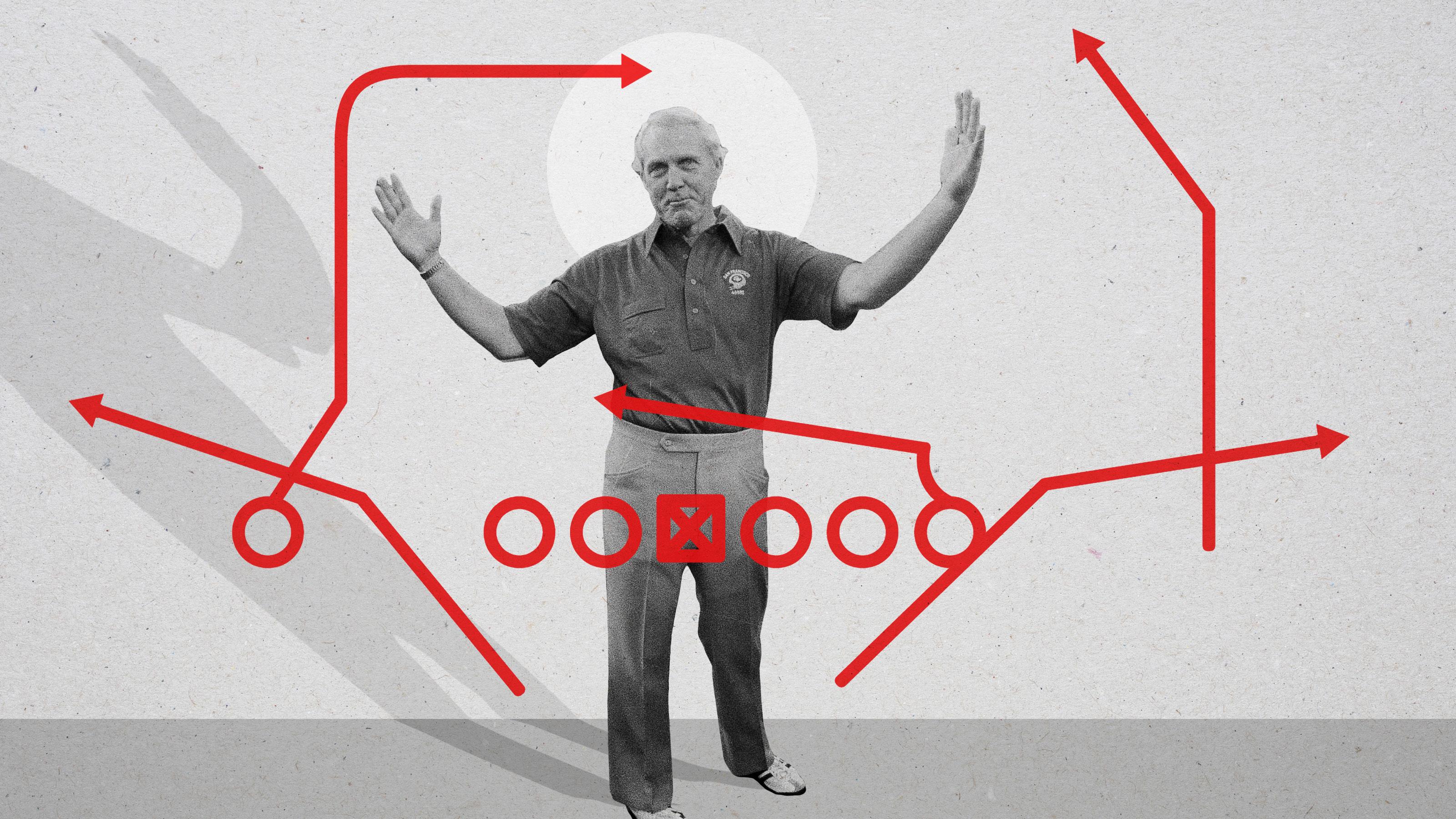The Genius of Bill Walsh
In an excerpt from his new book, ‘Gridiron Genius,’ former NFL general manager Michael Lombardi recalls the lasting insight of the former San Francisco 49ers head coach’s football philosophiesBill wants a meeting.
Combine those two words — Bill and wants — and stuff happened; everyone who worked for the 49ers perked up, paying close attention to whatever came next. “Bill wants” could move mountains. “Bill wants” could make or break careers.
Just days before the critical 1987 draft, what Bill wanted was everyone on the 49ers staff crammed inside a second-floor office facility for an emergency meeting. The tiny impromptu conference room was no match for a “Bill wants” all-points bulletin. At my utterance of those two words every assistant in the building came running, which meant there weren’t nearly enough seats for everyone.
Luckily, Walsh was quick and to the point.
Bill wanted Steve Young.
We were all highly skeptical but also intrigued. A big part of Walsh’s genius was his uncanny ability to spot a quarterback in a crowd. Even from a distance and after only a few throws, he could sense immediately if a quarterback could run his offense. Guys like Walsh and Belichick are unusual this way: They can visualize how skill sets fit in their schemes in a way that both maximizes those abilities and fuels the system. Walsh was secretive about that particular gift of his; he never shared what he saw. So he seemed like a railbird at the track who could discern the best horses just by studying their gait around the paddock. It might have been footwork, a kinetically clean throwing motion, the way a quarterback carried himself in the pocket, or, more likely, some mystical balance of several QB qualities floating around in his head — but whatever it was, Walsh knew it when he saw it.
In Walsh’s first season as the head coach and GM of the 49ers, in 1979, he took a trip to UCLA to work out Olympic hurdler turned wide receiver James Owens. Owens was incredibly fast, but Walsh wanted to see if he had the other skills necessary to be an NFL receiver. He forgot one small thing, though: He needed an arm to throw to the guy. As luck would have it Notre Dame’s quarterback, Joe Montana, was working out nearby, preparing for the draft, too. Walsh asked him to stop by. I’m not exactly sure what Walsh zeroed in on that day with Montana, but after a few throws he was so focused on the quarterback that he practically forgot Owens was there. (As a talent evaluator you never want to rely on this kind of divine, or dumb, luck — accidentally borrowing a future Hall of Fame quarterback as a workout passer or, say, drafting Tom Brady in the sixth round — but you don’t want to be closed off to it, either. Heck, as great as he was and as seriously as he took his profession, Walsh wasn’t above a little scouting serendipity.)
Before the workout at UCLA began, Walsh was leaning toward drafting Stanford quarterback Steve Dils, who had played for Walsh and knew his offense inside and out. But after one or two routes at UCLA that day, Walsh knew he had found what he was looking for: his franchise quarterback.
Nearly a decade later, he needed to find another.
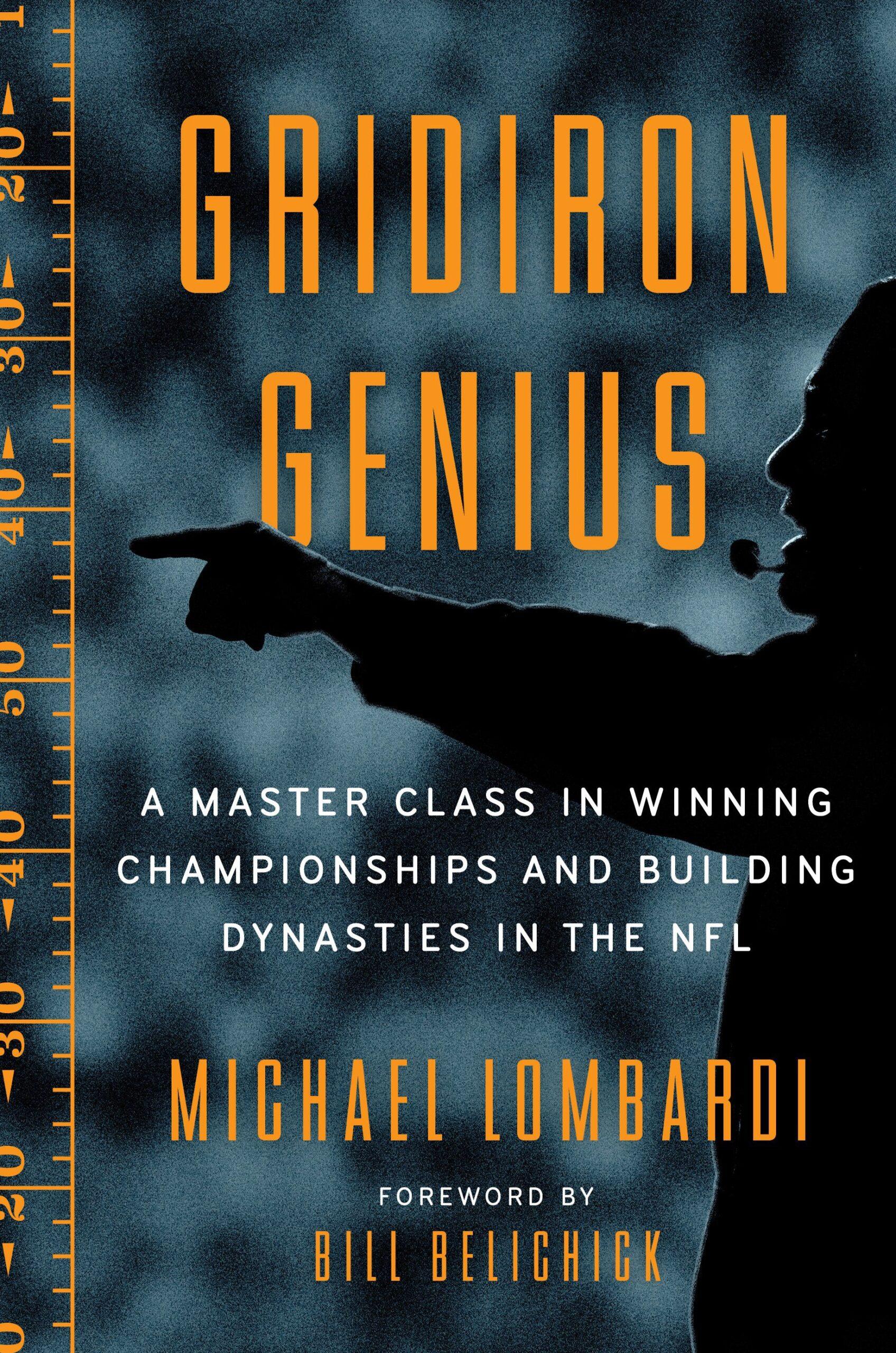
Prior to the 1987 draft, I traveled to Indianapolis with Walsh for the NFL Combine. Part of my duties at my first NFL stop was to caddy around Walsh’s notebooks. This was the mid-1980s, and backpacks were an accessory for Marty McFly in Back to the Future, no one else. Coach Walsh was not a backpack kind of guy, anyway. But that was okay. It meant I had a good job — lugging around a huge briefcase stuffed with his things and mine — and lots of one-on-one time with “the man.” As we entered the old Hoosier Dome that day, Walsh was in a hurry, striding with purpose toward our coaches in the stands who were there to evaluate the rookie class of quarterbacks. The whole idea of having to look for a quarterback put Walsh in a sour mood. The 1986 Niners had been injury plagued, especially at quarterback, and Walsh wasn’t sure how Montana would recover from back surgery. Walsh would never actually say it, but he sensed Montana was nearing the end.
As we hurried to our seats in the stands, Walsh stopped short and turned to stare at the field. Across the stadium a few of the rookie quarterbacks, including an unknown passer from Delaware, were already on the field working out. Walsh stood like a statue, as if he had gone into a trance. I had no idea who or what was holding his attention until he turned to me and barked, “Make sure Holmgren goes to see that quarterback throwing right now.” In one glimpse across a field, Walsh had seen a level of athleticism and timing from Rich Gannon that it would take the rest of the NFL a decade to figure out.
When I relayed the news to our quarterbacks coach, Mike Holmgren, about Bill wanting (once again, “Bill wants”) him to travel to Newark, Delaware, he was none too happy, blaming me for his itinerary, as he thought I had promoted the local boy. The charge was utterly false. Sure, as a South Jersey kid I had a fondness for all things from the Philadelphia area, but I wasn’t nearly bold enough to sell a Blue Hen quarterback to Walsh even if I wanted to. Walsh was the expert.
Holmgren did eventually go to Delaware, and he liked Gannon. But he didn’t love him (Gannon had prototype size and arm strength, but Delaware’s wing-T offense and the old Yankee Conference weren’t exactly ideal preparation for the NFL), and so Gannon was selected by the Patriots — to play defensive back. Gannon had no interest in that, and after bouncing around the league from New England to Minnesota to Washington to Kansas City, he ended up paying off with the Raiders, under Jon Gruden, who finally inserted Gannon into the scheme that perfectly fit his skills: Walsh’s West Coast offense. In 2002, Gannon was named the NFL’s MVP after leading the Raiders out of nearly a decade of mediocrity and back to the Super Bowl. I was with the Raiders staff at the time, and remembering how Walsh had spotted Gannon’s talent in an instant that day in Indiana, I couldn’t help but wonder just how many potentially great quarterbacks have wasted away in the wrong system. Would Gannon’s late-career success have happened much earlier if we had drafted him in San Francisco?
At the time, of course, Walsh really only had eyes for Steve Young.
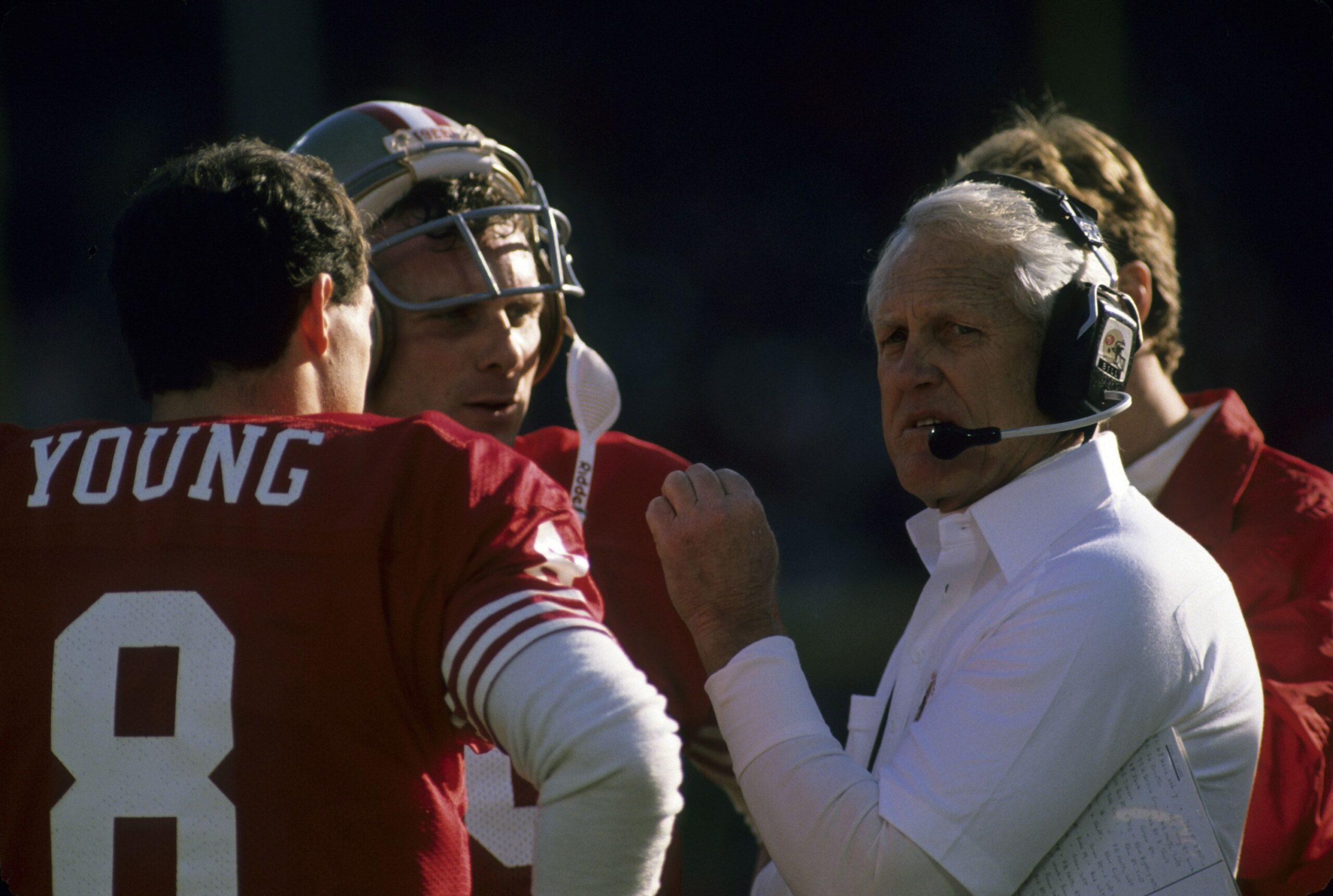
That was the message he wanted to relay to our entire staff inside that crowded second-floor conference room. As Walsh made his announcement, the faces of the assembled football minds were those of schoolboys who had sipped sour milk. Steve Young? The running QB? Steve Young who was a disaster as the quarterback of the Tampa Bay Buccaneers? That Steve Young?
A little background: Young’s college career was sensational. After leading the Brigham Young Cougars as a senior to an 11–1 record that included an impressive win over Missouri in the Holiday Bowl, he was the consensus top quarterback in the draft. But before that could happen J. William Oldenburg bought the Los Angeles team in the upstart United States Football League and gave Young one of the biggest sports contracts ever to lead it. (The four-year deal negotiated by Young’s agent, Leigh Steinberg, appeared to be worth $40 million.) But then the league folded and Young signed with the Bucs, who selected him with the first pick in the 1984 supplemental draft of USFL talent. In two years in Tampa, though, Young displayed better running skills than passing skills, and the Bucs had seen enough to decide it was time to try someone new.
That meant Young would be a relatively cheap pickup (essentially costing a second rounder and a fourth rounder plus some of owner Edward DeBartolo Jr.’s hard-earned cash). Yes, the former most-sought-after player in football was on the bargain rack, mainly because every other “expert” in the league felt he would never fit the traditional role. That included 99 percent of our staff. Now that Young is in Canton, there’s a lot of revisionist history about how he came to be a 49er. For starters, Walsh has said that once he informed DeBartolo about Young, the deal was done in “minutes.” The truth is that he labored over the decision. In fact, he eventually held that emergency meeting to get his staff’s opinion on the trade. And though lots of people will claim they knew all along that Young was destined for greatness in the NFL, I’m here to tell you that when Walsh asked for a show of hands of those who supported making the deal, none went up.
Not one.
Walsh actually stormed out of the room — and made the deal anyway.
What Walsh knew better than anyone in the game was that the key to success in the passing era of the NFL was to marry the right quarterback to the right scheme. (It’s much harder than it sounds, trust me.) Most of the time, when the quarterback and the system clash, it’s the quarterback who goes. Walsh approached challenges like this one from an entirely different perspective. That’s why he had such a huge impact on the game.
Early on in his coaching career, when faced with a quarterback in Cincinnati who didn’t match his offense, Walsh flipped the script: He kept the quarterback and changed the offense instead, transforming the NFL along the way.
In 1968 Walsh was an assistant coach for the expansion Bengals. Besides his talent as an evaluator, Walsh was a deep thinker, a student of the game, and a problem solver. His specialty was counterintuition, and it helped him solve what appeared to be an insurmountable problem in Cincinnati: a roster of castoffs that featured much less talent than every other team in the league.
At that time, the NFL was still a run-dominated league; passing was a tactic of last resort. As former Ohio State coach Woody Hayes said, “Three things can happen when you attempt a pass, and two of them are bad.” Reliance on the forward pass was actually considered a bit cowardly. But the expansion Bengals had an undersized line and not much hope of generating a productive ground game. Walsh took a look at the dire situation and saw one thing: opportunity. Whereas most coaches would have thought that moving the ball in Cincinnati would depend on either compiling a stronger roster or throwing the ball more often, Walsh sought a less obvious solution — and, most important, one that was likely to work. He had a player pool of parts — some good, some bad — and no chance in the short term to add anyone else to the mix. But if he couldn’t change his players, maybe he could change the offense.
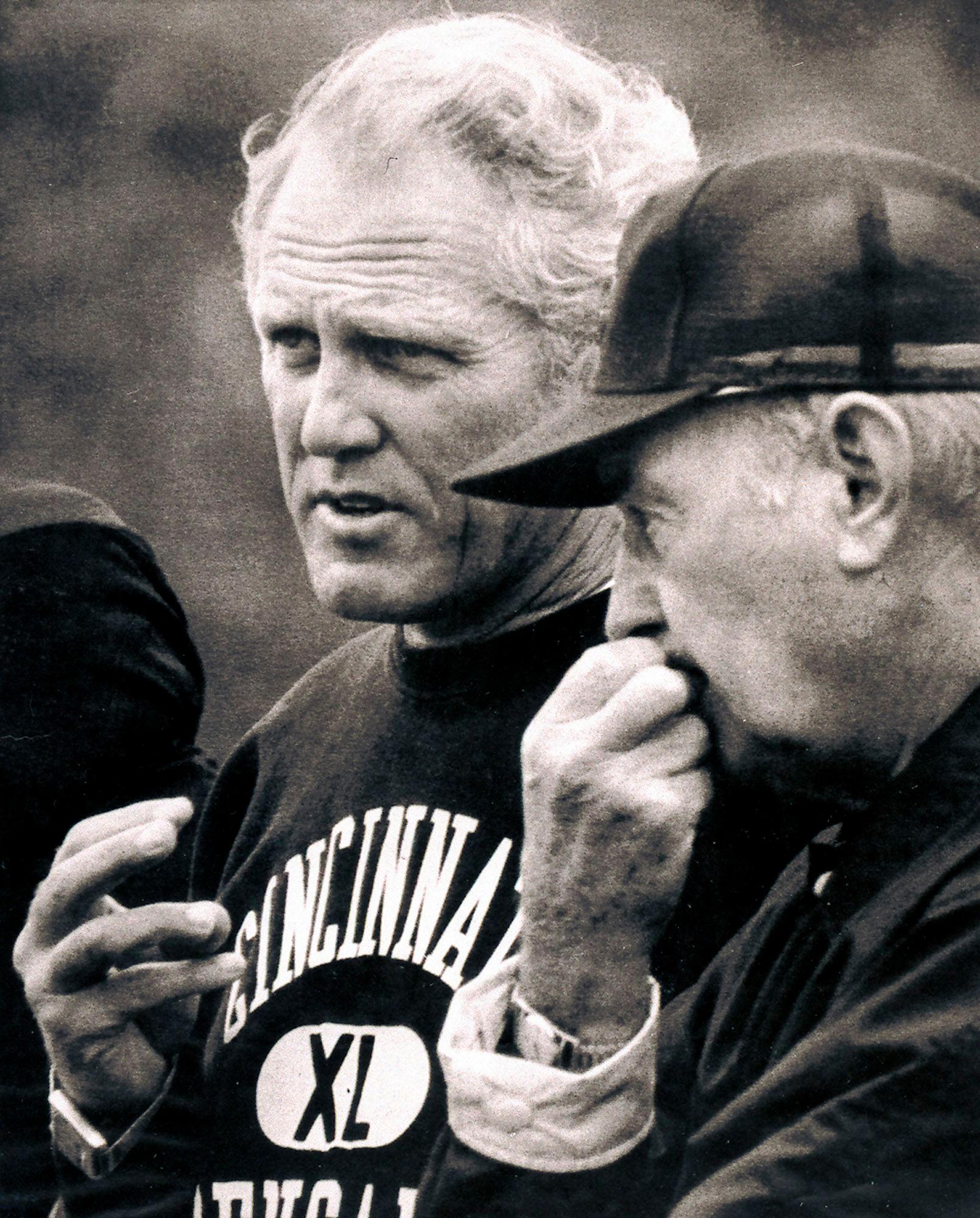
In a story Walsh repeated many times, including in his posthumous book The Score Takes Care of Itself, the inspiration for his West Coast offense was the Bengals quarterback Virgil Carter. Carter was one of the first in the long line of great quarterbacks who played at Brigham Young. At just over six feet, he was not an impressive physical specimen, yet he still set a host of school, conference, and NCAA records and led the Cougars to their first-ever conference title in 1965. Drafted by the Bears in 1967, he played 10 games in Chicago over two seasons, throwing 193 passes with 6 touchdowns and 10 interceptions, before being traded to the Bengals after the 1969 season.
Carter did not have a particularly strong arm, and that was a deal breaker for most teams. Much of the league gravitated toward cannon-armed throwers because passing attacks back then almost always came down to “everybody go long.” To this day, a quarterback who can’t throw with velocity usually doesn’t last. But Carter had a different kind of skill set and a demeanor that intrigued Walsh. He was deadly accurate on short passes, physically and mentally nimble, and impervious to pressure. Walsh thought he could develop an offense around such a combination, one that would control the ball despite a useless running game. And controlling the ball enough — say, gaining 25 first downs a game — and playing well on special teams would put them in position to find a way to win at the end. The Bengals couldn’t attack the defense vertically with strength the way everyone else did, so they would attack it horizontally with speed, using an intricately timed short passing game that essentially turned short passes into long handoffs. And just like that, as Steve Jobs and Steve Wozniak changed the world from inside that small garage in northern California, Walsh ushered in the future of football from a cramped office in Cincinnati.
A future that would come to be known as the West Coast offense: the last and perhaps greatest innovation in pro football, conceived in Middle America.
Weirdly, Walsh’s offensive success — and his unique perspective on the passing attack — stemmed in part from his experience as a defensive coach. (He was a defensive coordinator for Marv Levy at California and the defensive backfield coach at Stanford under John Ralston.) Belichick also used his defensive knowledge to design one of the most prolific offenses in modern football. Both men understood the checks and adjustments that occurred within defensive schemes. They built a counterattack by knowing their enemy. Most coaches today have been trained on only one side of the ball. Because they don’t know both, they can’t always effectively game-plan against what the opposition is attempting.
Through his defensive lens, Walsh built a system that took into account the things Carter could offer: his football intelligence first and foremost. Football intelligence is way different from book smarts, but in this case Carter, an academic All American, had both. He quickly grasped the ins and outs of complex schemes, knowing what every defender was likely to do. He could do that because he was able to transfer what he learned in the classroom to the field. That is what’s known as football smarts. Anyone can memorize a playbook. That’s checkers. The West Coast offense is chess, and it requires a quarterback who can instantly react, without thinking, to any of the dozen or so twists and disguises a defense throws at him before and after the snap. With his football smarts, after internalizing opponents’ tendencies in tape sessions, Carter could make those game-speed decisions and adjustments that are in and of themselves the nervous system of Walsh’s offense.
If Walsh’s quarterbacks needed to be quick-witted, they also needed to be quick-footed. The ability to throw in rhythm was the essential ingredient in his system. You see it when a quarterback releases the ball on the proper step of his drop, quickly, accurately, and in synchrony with the receiver’s route. In the West Coast offense, the passer’s and receiver’s footwork is synced up like that of dance partners. As soon as Carter’s back foot planted at the end of his drop, his intended target would be coming out of his break. Think of the way an orchestra depends on each section of instruments working off the others. The attack that Walsh invented needed to be as finely tuned. He was forever reminding the quarterbacks to focus on their footwork, with each pass play requiring its own precise mechanics.
Walsh let the rest of the football world focus on a quarterback’s arm. He was focused on the feet. It was a paradigm shift born from his lifelong love of boxing. Walsh often shadowboxed his way down the halls of Niners headquarters, and whenever he found a fitting boxing metaphor to motivate his team, he was happy. He broke down boxers as he watched fights: their footwork, their quickness, how they moved, timing, balance. Like a boxer who can throw a flurry of punches as he deftly shuffles his feet, Walsh’s quarterbacks needed their body parts to work in a similarly surgical unison. Quick feet, quick arm. Balanced feet, balanced arm. Coordinated feet, coordinated attack.
Every play in Walsh’s offense was designed around precise timing. All routes were synchronized such that as the quarterback hit his third (or fifth) step, the ball would be out of his hand and on to a ball catcher. That quick-hit rhythm solved one of the Bengals’ main weaknesses — blocking — by relieving the offensive line of having to hold blocks too long. It also allowed the receiver to become a runner beyond the line of scrimmage, in stride and in the open field. As a result, Walsh’s offensive schemes elevated the relevance of yards after catch as they slowly transformed a run-first league into a pass-happy one.
Once again, though, Walsh and his new offense were the beneficiary of great luck: Just as the West Coast was developing, the NFL made several rule changes to encourage more passing and scoring. Offensive linemen were now allowed to extend their arms and use their hands in pass blocking (essentially legalized holding) to protect the passer, and defenders no longer could redirect receivers once they got beyond five yards of the line of scrimmage. With more time to throw and with pass catchers free to run across the shallow part of the field — the bread and butter of Walsh’s scheme — the West Coast offense began to thrive and expand.
Walsh drew up one play after another, and before long he had a binder full of short passes that quickly got the ball out of Carter’s hand and to his receivers just as they reached an open seam in the defense. He sent all his skill position players out on routes, lining them up in unusual and changeable spots to stretch the field horizontally rather than vertically, the league norm. The alignments gave Carter a better presnap view of the defense. Walsh had created the ideal situation for a guy with a diagnostic mind and a quick, accurate arm.
I have come to believe that all great coaches think alike regardless of what sport they’re in. Basketball Hall of Fame coach Phil Jackson made his fame with the triangle offense. Created by Sam Barry at the University of Southern California and enhanced by Tex Winter, an assistant on Jackson’s staff in Chicago and Los Angeles, the triangle was basketball’s way of creating clear passing lanes. Simply described, when the ball is thrown into the post, that player and two others on the same side of the ball form the points of a well-spaced triangle. Walsh’s passing game was essentially the triangle on turf.
When you break down any of the fundamental plays of the West Coast offense, the same geometric shape forms inside the defense: a triangle. For example, say you have two backs in split formation in the backfield and the tight end on the line to the right. Now, the Z receiver (the one on the tight end’s side) runs a 12-yard curl while the tight end runs to a spot that is exactly in front of the location of the snap when the play started, at a depth of five yards, where he can’t be legally bumped off his route. Meanwhile, one back swings out toward the sideline of the Z receiver’s curl. Hit pause and draw a line from that back to the Z receiver to the tight end and what do you get? An isosceles triangle.
The formation means the West Coast quarterback is never looking at a particular receiver. Rather, he looks toward the apex of the triangle and then decides where the ball should go, depending on the coverage or the spacing. Walsh hated to see quarterbacks locking in on a receiver early in his route because defenses can see that, too. But when quarterbacks instead key on an area of the field — the triangle — defenders don’t quite know what or who they are guarding, especially if a receiver makes a late break, coming free just as the quarterback hits the launch step in his drop.
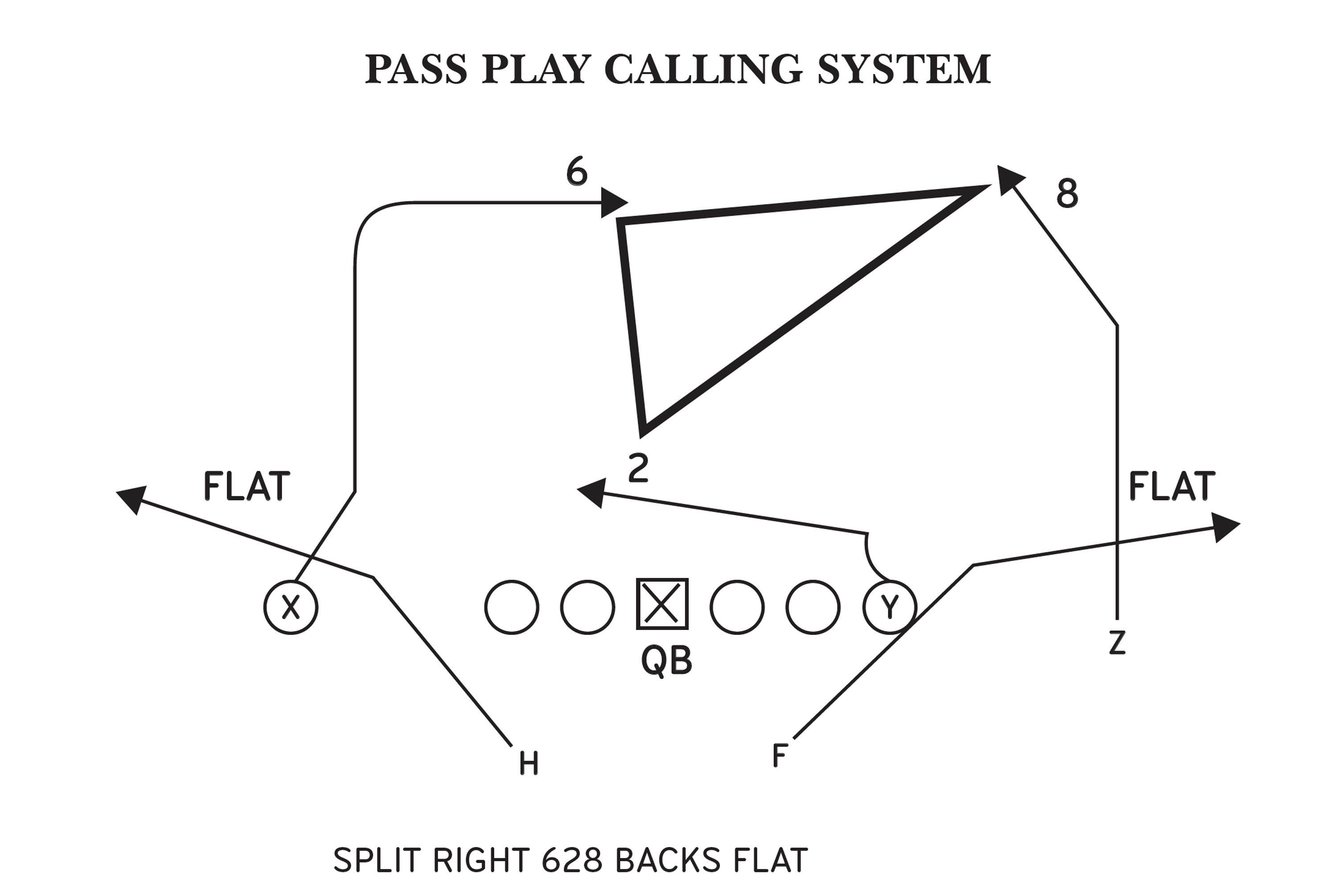
Spacing, timing, and rhythm. Seems simple enough, but it actually put stagnant, slow defenses, unaccustomed to adaptation, at a huge disadvantage. So much so, in fact, that in the first year of the new offense — just the third year of the team’s existence — Carter, Walsh, and the Bengals won the AFC Central. In so doing, Walsh had proved something revolutionary in the typically risk and innovation-averse NFL: that quarterbacks with a different skill set could lead successful attacks so long as the passer matched the scheme. When it comes to evaluating quarterbacks, pedigree and prototypical size, speed, and arm strength will always matter, but thanks to Walsh, things such as intelligence, poise, and precision also became important.
More than anything, Walsh coveted accuracy from his passers; it’s what allowed receivers the opportunity to run with the ball after the catch. If a tight end with his back turned to the defense was open in an empty zone, Walsh expected the quarterback to throw away from an oncoming defender to let the pass catcher know where that defender was and which way he should run to avoid him.
Fans of a certain age have the play known simply as “the Catch” indelibly etched in the part of their brain reserved for important historical moments. In the 1981 NFC championship game against the Cowboys, 49ers quarterback Joe Montana threw the ball so high and toward the back of the end zone that it almost appeared to be a throwaway. But that throwaway was in fact precisely where Walsh wanted it, because the only person who could catch it was receiver Dwight Clark. For Walsh, throwing to the back end line always meant throwing high, whereas throwing near the goal line meant throwing low because, in both cases, the ball could be caught by a 49er or it would be incomplete. High throws near the goal line could be tipped and intercepted. For similar reasons, he was never a big believer in small receivers, because wing span and catch radius could only help the quarterback. He left no detail to chance, and all those details were harmoniously linked.
To push the game forward Walsh was constantly looking back through history for guidance and inspiration. Walsh pored over the old tapes of teams coached by Clark Shaughnessy, a longtime college mainstay and a big believer in the T formation — quarterback behind center, two running backs spread perpendicularly behind him — finding them intriguing even though there were few forward passes in any of them. Rather, he watched for the blocking schemes, which set off offensive linemen at angles to defenders instead of having them face the rush head-on. Those side blocks made it easier for less talented players to seal off defenders while providing a more unobstructed path for the back to follow. Many disparaged the West Coast offense as more finesse than power, partially because angle blocks outnumbered drive blocks. But helping players get an edge is not finesse; it’s just smart. Similarly, with the old T formation, the ball handling confused the linebackers, as they watched the ball instead of the blocking scheme, causing them to be slightly out of position. And in the run game, being even a little bit in the wrong spot can create a lane big enough for a back to scoot through.
In the end, though, the most significant influence for Walsh was his time spent with the Raiders. Oakland’s passing game — which, to be fair, was preceded by Sid Gillman’s air attack — was a precursor to the West Coast offense in the way it freed the linemen from having to protect the quarterback for too long through the use of short passes and quick releases. Yes, Davis much preferred throwing the ball down the field, but he, too, believed strongly in the timing between quarterback and receiver. Everybody had to be in sync. That included tight ends and running backs, which in those days was a rarity. With those players involved, there were often five route runners who had to be covered, thus overwhelming defenses.
Of course, that was when things worked just right — which they rarely do. But even in the typical chaos that takes place on a football field, Walsh still managed to find something useful. In another story that Walsh loved to tell and write about, Cincinnati’s tight end Bob Trumpy, facing the Raiders, once broke the huddle and lined up on the right side instead of on the left, where the play called for him to be. The quarterback shifted him to the other side in time to run the play correctly, and when Trumpy came to the sideline when the series was over, he was apologetic. The Bengals coaches, though, particularly the offensive line coach, Bill Johnson, barely heard him because they were still marveling at the fact that when Trumpy moved, four defenders followed him (and actually ran into one another in the confusion), which meant that when he ran back to where he was supposed to be, the Raiders were not where they were supposed to be.
Defenses always set their fronts and coverage packages against the strength of the offense — that is, the side on which the tight end lines up. When Trumpy moved, the strength of the defense moved, too, and when he moved back, it had to realign. The shift added another complicated layer to the defense’s communication while forcing the defense to tip its hand just before the snap. Once Johnson and Walsh saw this, they knew they could mess with the defense — get it out of position and confuse its communication.
Thus, out of a broken play the shift was reborn as a major weapon in the West Coast offense.
Believe it or not, the run was also a weapon in Walsh’s new scheme. Walsh was weaned in a time when establishing the run was agreed to be the most critical component of winning football. But he was the first to realize that everyone was chasing a lie. He correctly understood that teams interested only in establishing the run were creating nothing more than a chance to kick a field goal. Think about it: The odds of covering 80 yards, more or less, on the ground are not good; one negative play pretty much stalls a drive. One pass play of, say, 20 yards, though, dramatically changes field position and a team’s chances of driving to a touchdown. Walsh’s West Coast offense wasn’t anti-run. He just wanted to run the ball with a creativity that would give the players the best chance to succeed. Running every play between the tackles was not for him. In fact, he saw the traditional run game as the lazy coach’s way, putting the onus on players to execute or rely on brute force for yardage. That was something Walsh always wanted to avoid.
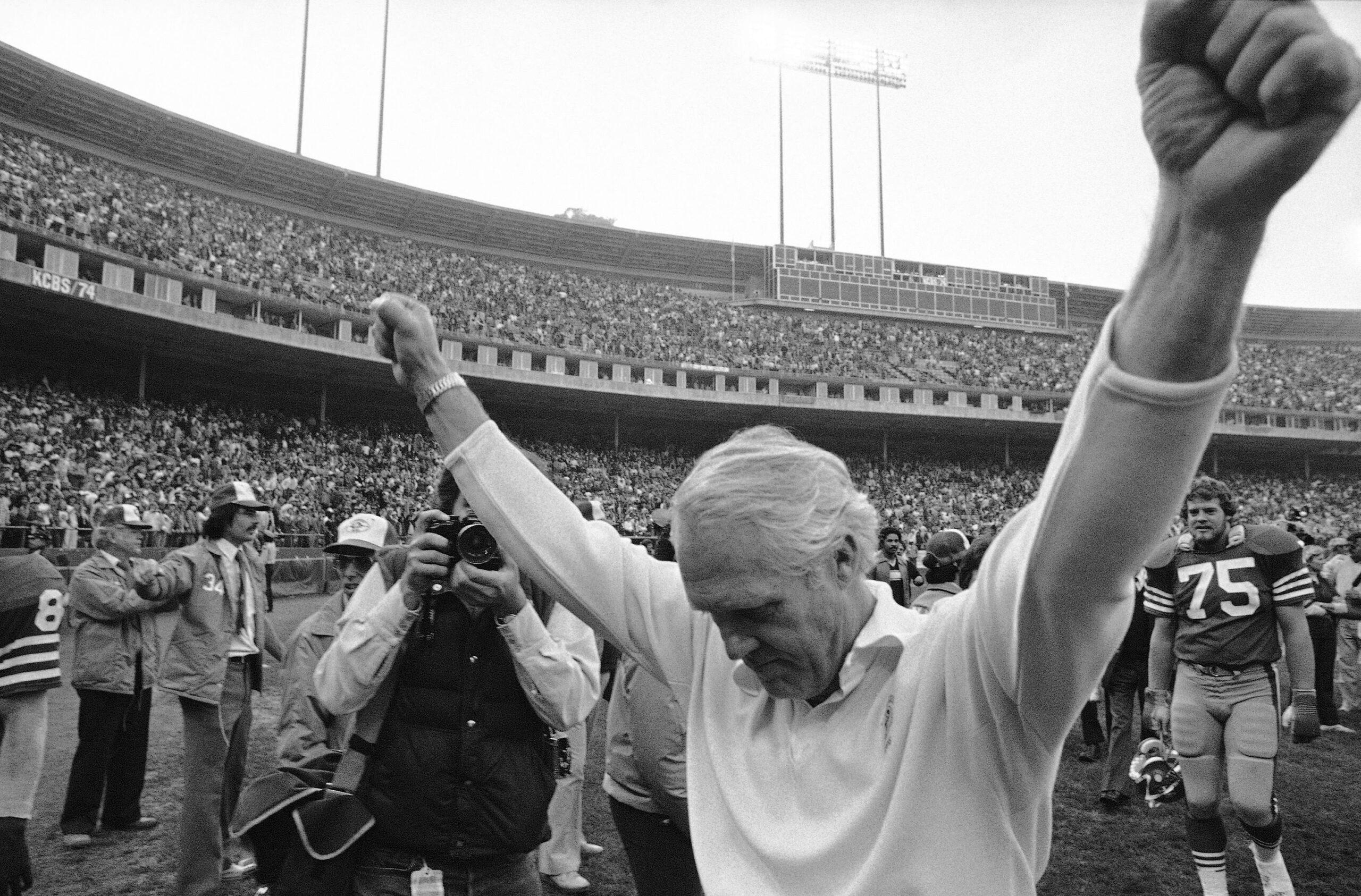
That’s why Walsh’s teams — not to mention the best teams in football today — came out throwing. If you were to plot the rushing attempts of recent playoff teams by quarter, it would look like this: first quarter, a rush-to-pass percentage in the bottom third of the league; second quarter, same; third quarter, middle of the pack; fourth quarter, top third, more or less. Examine the regular-season breakdowns of the teams that made it to the Super Bowl after the 2016 season. In the first half, the Patriots threw the ball 57 percent of the time and ran it 43 percent. The Falcons threw 61 percent of the time and rushed just 39 percent. But in the second half, the Pats were more 50/50, and the Falcons 54/46. Walsh was the first NFL coach to foresee the paradigm shift on offense and how the run one day would become more about preserving the lead than establishing it. (Maybe if the Falcons had stuck to the plan and run the ball more in the fourth quarter of Super Bowl LI they would have won the game.)
Old schoolers think establishing the run is a quarterback’s best friend. But what kind of a friend is third and long when everyone in the stadium knows you have to pass the ball? In truth, conservative play calling is a quarterback’s worst enemy. The best thing an offense can do for its quarterback is throw on traditional run downs so that the QB doesn’t have to deal with obvious passing situations. Throwing the ball makes running the ball easier, and that’s how Walsh succeeded with the Bengals.
In the first few years of what was derisively called the dink-and-dunk offense, Walsh found success not so much in scoring points but in getting first downs and keeping the ball away from the opponent. Defenses were slow to adjust, continuing to play as if they were expecting the Bengals to throw down the field. Pretty soon the defenses found themselves in even worse trouble as the Bengals added more talented pieces to the offense, receivers such as Isaac Curtis, Charlie Joiner, and Chip Myers, whose speed allowed Walsh to add a downfield element to his short game. The first-down machine had been transformed into a scoring machine.
Thanks to what Walsh did in Cincinnati, NFL teams started to think of their offenses the way baseball executives think of their stadiums. Baseball teams collect talent that makes the most sense for the quirks of their home parks. The Red Sox stockpile right-handed hitters because the Green Monster in left is so close. More cavernous stadiums become homes to speedier players. Stadiums dictate style. Same thing for football offenses. Quarterbacks have to be slipped into systems that best feature their skills. Very, very few players can make a bad fit work. Too often, though, teams think that the player makes the system rather than the other way around. It sends them hunting for a guy with obvious tools — a gun for an arm, mobility — around whom they figure they will build an offense.
Walsh and his West Coast offense have proved that’s just not how it works.
Walsh always cautioned me: “Very few people can coach the quarterback, and even fewer can evaluate them.” After more than 30 years in football I can verify that that statement is 100 percent accurate. When it comes to the most important position in sports, biases, rationalizations, and willful ignorance all get in the way of dispassionate and accurate analysis. Even a genius like Walsh knew that it was an imperfect science with exceptions to every rule.
Adapted from GRIDIRON GENIUS: A MASTER CLASS IN WINNING CHAMPIONSHIPS AND BUILDING DYNASTIES IN THE NFL by Michael Lombardi. Copyright © 2018 by RFK LLC. To be published by Crown Archetype on September 11.
